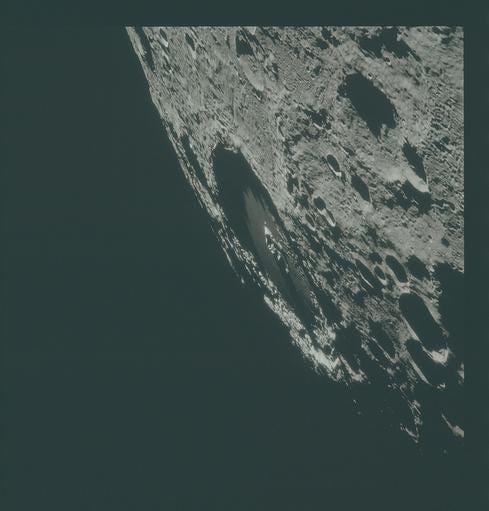NASA Reveals Changes To Jupiter's Great Red Spot
NASA has found that Jupiter is undergoing a radical change in its most prominent feature -- the Great Red Spot -- which is three times the size of our own planet.


NASA's Apollo Archive: 10 Fascinating Images
NASA's Apollo Archive: 10 Fascinating Images (Click image for larger view and slideshow.)
Jupiter, the largest planet in our Solar System, is undergoing a massive change, new photos from NASA's Hubble Space Telescope reveal. The images show a rare wave just north of the planet's equator, as well as a unique filamentary feature in the core of the Great Red Spot.
Equivalent to the size of three Earths, the Great Red Spot is Jupiter's most notable feature. The planet orbits the Sun between Mars and Saturn.
The images appear to confirm that the Great Red Spot continues to shrink and become more circular, as it has been doing for years.
The long axis of this characteristic storm is about 150 miles shorter now than it was in 2014. The report notes that recently the storm had been shrinking at a faster-than-usual rate.
The Great Red Spot was first observed by the Italian astronomer Giovanni Cassini in 1665, who described it as a "permanent spot," an observation which has no doubt achieved merit over time.
To this day, the Spot remains more orange than red, and its core, which typically has a more intense color, is less distinct than it used to be. Theories supported by laboratory experiments suggest the color may be caused by complex organic molecules, red phosphorus, or another sulfur compound.
"Every time we look at Jupiter, we get tantalizing hints that something really exciting is going on," Amy Simon, a planetary scientist at NASA's Goddard Space Flight Center, wrote in an Oct. 13 statement. "This time is no exception."
In Jupiter's North Equatorial Belt, the researchers found an elusive wave that had been spotted on the planet only once before. Voyager 2, a space probe launched by NASA in the late 1970s, noticed it.
In images snapped by Voyager 2, the wave is barely visible. Nothing like it was seen again until the current wave was found, traveling at about 16 degrees north latitude, in a region dotted with cyclones and anticyclones.
Similar waves, known as baroclinic waves, also appear in the Earth's tropical zones, where cyclones or hurricanes form.
[NASA's Mars Journey: What It Will Take.]
"Until now, we thought the wave seen by Voyager 2 might have been a fluke," co-author Glenn Orton of NASA's Jet Propulsion Laboratory (JPL), wrote in a statement. "As it turns out, it's just rare."
The wave may originate in a clear layer beneath the clouds, and only become visible when it spreads up into the cloud deck, according to the researchers. The idea is supported by the spacing between the wave crests.
The images are part of NASA's Outer Planet Atmospheres Legacy program, which includes images of the outer gas giants Uranus, Neptune, and Saturn that will be added to the series later.
"The long-term value of the Outer Planet Atmospheres Legacy program is really exciting," co-author Michael H. Wong of UC Berkeley, said in a statement. "The collection of maps that we will build up over time will not only help scientists understand the atmospheres of our giant planets, but also the atmospheres of planets being discovered around other stars, and Earth's atmosphere and oceans, too."
Jupiter is no stranger to seismic events, however gaseous -- the planet spectacularly bore the brunt of a comet that broke apart and collided with it in 1994, an event of such magnitude that it could be seen with even the smallest of telescopes here on Earth.
About the Author
You May Also Like






